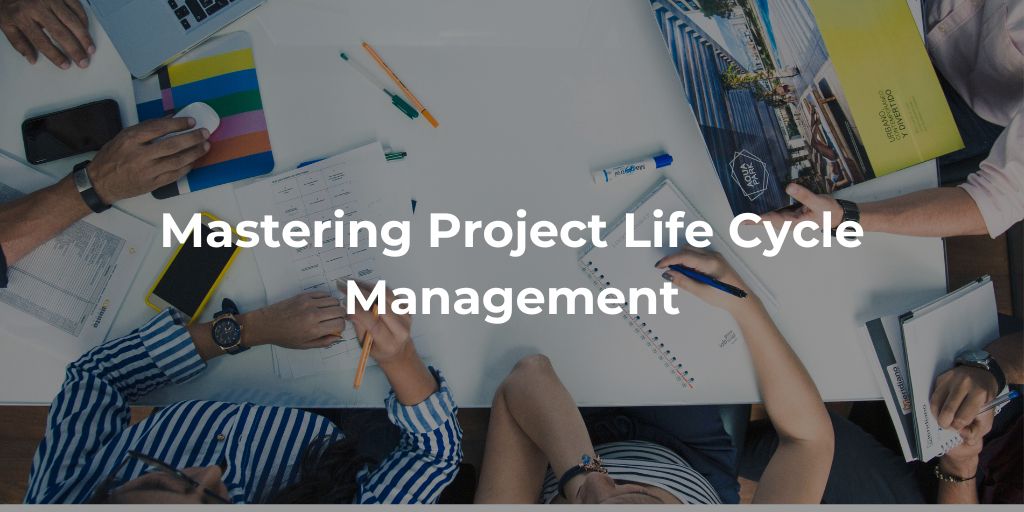Project lifecycle management plays a crucial role in ensuring that objectives are achieved effectively and on time. However, increasing complexity and expectations in the business environment often make it challenging to successfully tackle the different phases of a project.
In this article, we will explore some strategies for optimising project lifecycle management, simplifying processes and ensuring the optimal use of resources to achieve concrete results.
What is the Project Life Cycle?
The life cycle of a project includes all the phases through which an initiative progresses, from conception to conclusion. Generally, it is divided into five main phases:
- Initiating: Defining objectives, stakeholders, resources and scope of the project.
- Planning: Elaborating a detailed plan with timelines, budget, risks and assignment of tasks.
- Execution: Implementing planned activities, coordinating the team and resources.
- Monitoring and Controlling: Checking progress against targets, managing risks and making corrections.
- Closing: Concluding the project, evaluating the results and documenting lessons learned.
Managing each of these phases effectively is essential to ensure the success of the project. The right strategies can make the difference between achievement and failure.
1. Establishing Clear and Measurable Objectives
The first strategy for success in project life cycle management is to define clear and realistic objectives.
Well-structured objectives serve as a guide for all subsequent activities and help to maintain focus throughout the entire project.
How to:
- Use the SMART method to ensure that objectives are Specific, Measurable, Accessible, Realistic and Time-bound.
- Involve all key stakeholders in target setting to ensure complete alignment.
A clear objective not only facilitates planning, but also helps to monitor progress and keep team motivation high.
2. Creating a Detailed Project Plan
Planning is one of the most critical phases in managing the life cycle of a project. A well-structured plan acts as a guide for the entire team, providing clear direction and ensuring that resources are allocated efficiently.
Essential elements of the project plan
- Timing: Divide the work into phases and assign realistic deadlines.
- Budget: Establish a detailed financial plan to avoid waste.
- Roles and responsibilities: Make sure each team member knows exactly what is expected of him/her.
- Project management tools: Use Gantt charts or software such as Trello and Asana that can help you monitor activities and keep everything under control.
3. Promoting Communication and Collaboration
Effective communication is the glue that holds every project together. Poorly coordinated teams or miscommunicated information can lead to errors, delays, and misunderstandings.
Strategies to improve communication:
- Organise regular meetings to discuss project status and address any issues.
- Use digital tools like Slack or Microsoft Teams to facilitate instant information sharing.
- Foster a collaborative environment where every team member feels free to contribute.
Transparency and active stakeholder engagement are essential for addressing any changes or challenges that may arise during the project.
4. Monitor and Adapt During Performance
Even the best-constructed plan can encounter unforeseen obstacles. For this reason, it is essential to constantly monitor the progress of the project and adapt quickly to changes.
How to:
- Perform periodic checks to ensure that the project is on track to meet objectives.
- Analyse performance metrics, such as KPIs, to identify potential problems in advance.
- Be flexible: If new priorities or challenges emerge, revise the plan to adapt to circumstances.
For example, if the initial budget or timeframe turns out to be unrealistic, making timely changes can save the project from failure.
5. Finish the Project with a Final Evaluation
The closing phase is often underestimated, but it is crucial for consolidating project success and preparing for the future. Accurate evaluation not only allows for a celebration of the results, but also offers important lessons for future projects.
How to:
- Gather feedback from stakeholders and team members.
- Analyse the differences between the initial plan and the final results to identify areas for improvement.
- Document lessons learned and share them with the team to ensure continuous learning.
Project lifecycle management is essential to ensure the success of any initiative. Each phase, from initiation to closure, requires a strategic approach, organisational skills, and careful oversight to ensure that objectives are met efficiently.
By applying the strategies described, it is possible to optimise processes and minimise the risks associated with unforeseen events.
Adopting these practices not only improves the quality of results, but also helps develop a sustainable and replicable management model for future projects. Investing in sound project lifecycle management is, therefore, a strategic lever for an organisation’s long-term success.
Source: PMI








